Establishing 'Home' for Oracle Bone Inscriptions
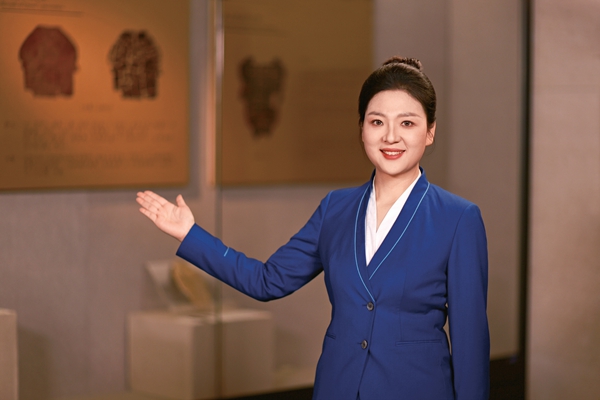
Yang Xiaoyu is a docent and social-education worker with the National Museum of Chinese Writing (NMCW) in Anyang, in central China's Henan Province. Anyang is known as "the hometown of oracle bone inscriptions." Yang recalls how one of her college instructors told her, "If a person works on something he/she likes, it will be a happy career for him/her." Yang describes herself as a happy and lucky person. Why? She works in her beloved hometown, Anyang. What's more, she and her colleagues devote themselves to creating a "home" for oracle bone inscriptions, and to telling the world marvelous stories about the history of Chinese characters.
Yang, a native of Anyang, is proud of her hometown every time she talks about the oracle bone inscriptions. "Formed vividly by lines and in various shapes, oracle bone inscriptions enable us to learn more about the lives of ancient Chinese. The inscriptions, a lot of which were carved on turtle shells or ox scapulae, represent the source of Chinese characters, and they serve as the root of our fine traditional Chinese culture," Yang says.
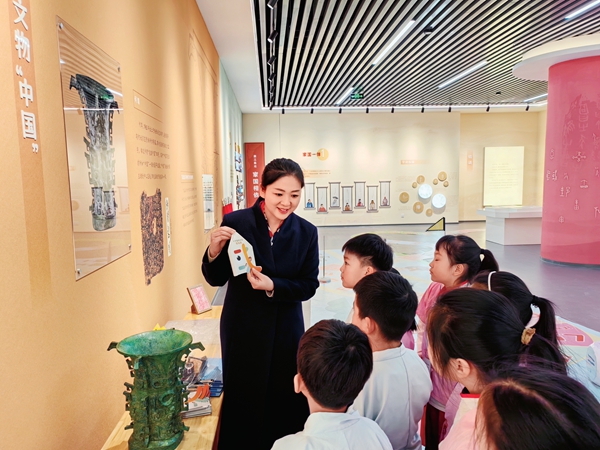
Make a Choice
Yang studied broadcasting and hosting in college. Since her major was under the department of Chinese language and literature at her school, Yang studied several courses — ancient Chinese language, contemporary Chinese language, ancient Chinese literature, and contemporary Chinese literature — during her four years of undergraduate studies. That helped deepen her understanding of both the Chinese language and literature.
While she was working on her graduation thesis, in 2008, Yang heard a State-level museum, being built in Anyang, was recruiting college graduates who had majored in broadcasting and hosting. "I was eager to work in my hometown, and to share what I had learned on campus with people," Yang says. She applied to the museum, which turned out to be the National Museum of Chinese Writing (NMCW).
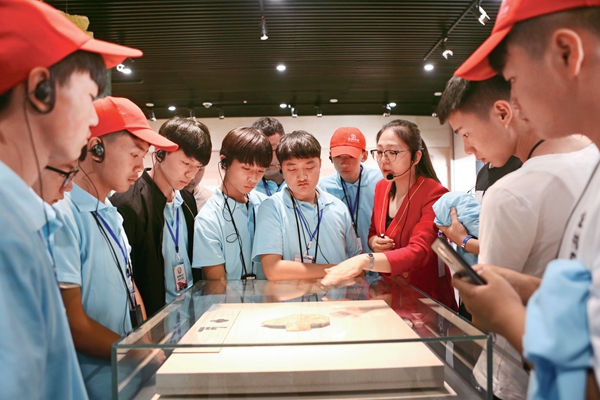
Before NMCW formally opened, in November 2009, Yang had been hired as one of the museum's docents. Now, she is experienced in telling stories about Chinese characters, especially about oracle bone inscriptions.
"Chinese characters were created by the ancestors of our nation, based on inspiration from their daily lives. Generally speaking, oracle bone inscriptions refer to characters recorded during the Shang Dynasty. Besides being carved on turtle shells and ox scapulae, characters were also cast on bronze ware or written on bamboo slips and/or pottery. But the majority of the recorded Chinese language, at that time, was carved on turtle shells and ox scapulae. Almost like writing an article today, oracle bone inscriptions, which recorded people's lives in ancient times, used vividly shaped characters to describe the date, time, place and people in relevance, and the ending of an event," Yang says.
She adds she is fascinated by oracle bone inscriptions, because the interesting inscriptions show people — in a simple, yet vivid, way — what life was like in ancient times.

'Home' for Chinese Characters
Around a decade ago, Yang and her colleagues started a course, at NMCW, to teach children and teenagers about oracle bone inscriptions and the later-evolved forms of Chinese characters. "Through the course, we hoped to establish a 'home' for Chinese characters, and to help young spectators learn about the history and values of Chinese characters," Yang recalls.
She remembers the first lecture, held during the National Day holiday in October 2014. That lecture got the attention of a preschool boy, Song Yunsong. Recalls Yang: "Song was accompanied by his mother when he visited our museum. Since then, he has developed a great interest in our course. During the six years he was in primary school, almost every time a lecture was offered during a weekend, Song attended. He passed tests and became a 'little docent' at our museum when he was a Grade-1 student. Now, Song is in his first year of junior high school. Sometimes his school arranges for students to participate in after-school educational events hosted by the museum. Song is like a 'little tutor,' who helps his schoolmates learn about oracle bone inscriptions. What's more, influenced by their son, Song's parents have become volunteer docents at our museum."
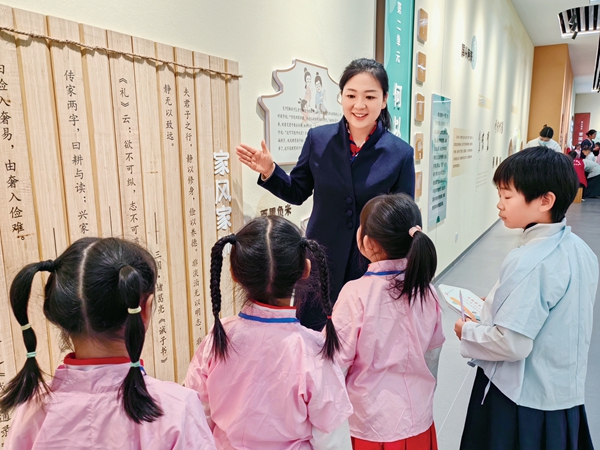
In recent years, Yang and her colleagues have planned and conducted various social-educational activities emphasizing the importance of family, family education and virtues at the museum. During annual festivals, including International Women's Day and Chongyang (Double Ninth) Festival, Yang and her teammates teach children how moral virtues — showing filial piety, for example — are revealed by the creation of Chinese characters during ancient times.
During traditional festivals, such as Lantern Festival and Dragon Boat Festival, children and their parents are invited to the museum. They make traditional foods and crafts together, so they can enjoy a happy time with their families.
Inspiring Love for Nation, Culture
Based on her work experiences at NMCW, Yang has come to realize museums play an important role in the education of children and teenagers, especially pertaining to traditional Chinese culture. By early April this year, NMCW had organized 1,670-plus public-benefit-educational events centered on Chinese characters. Those events attracted members from a combined 55,000 families.
Yang and her colleagues launched, in September 2019, a program to provide lectures on Chinese characters to students in remote, mountainous areas, and to students in revolutionary base areas. To date, more than 20,000 students — in 16 schools in southwest China's Yunnan Province, northwest China's Xinjiang Uygur Autonomous Region, and south China's Guangxi Zhuang Autonomous Region — have benefited.
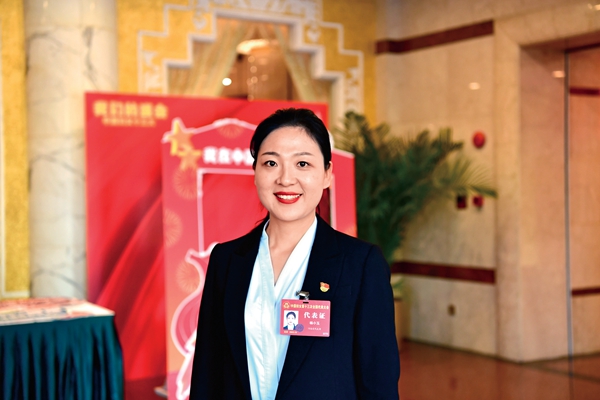 |
| [Photo by Zhang Jiamin/Women of China] |
Earlier this year, NMCW planned two exhibitions aimed at inspiring younger generations' love for their nation, and to foster their interest in fine traditional Chinese culture, by encouraging children and teenagers to learn Chinese history and culture through characters. "One exhibition kicked off in February. By learning characters related to 'nation' and 'family,' the young spectators are encouraged to think about the relationship between their small families and the home country," Yang says. "Another exhibition, the construction and arrangement of which started in March, will show interesting designs featuring the evolution of Chinese characters. This exhibition's arrangement is scheduled to be completed in June."
More than 90 percent of the docents at NMCW are women, says Yang. Many of those women are mothers. They excel in listening to and communicating with spectators. They are particularly good at guiding children, and good at inspiring the children's interest in Chinese characters.
In October last year, Yang was excited when she attended — as a delegate from Henan Province — the 13th National Women's Congress of China, held in Beijing. Since then, she has been determined to continue working hard at her post, and doing her best to promote fine traditional Chinese culture through the social-educational activities organized by the museum.
Photos from Interviewee
(Women of China English Monthly May 2024)
Please understand that womenofchina.cn,a non-profit, information-communication website, cannot reach every writer before using articles and images. For copyright issues, please contact us by emailing: website@womenofchina.cn. The articles published and opinions expressed on this website represent the opinions of writers and are not necessarily shared by womenofchina.cn.


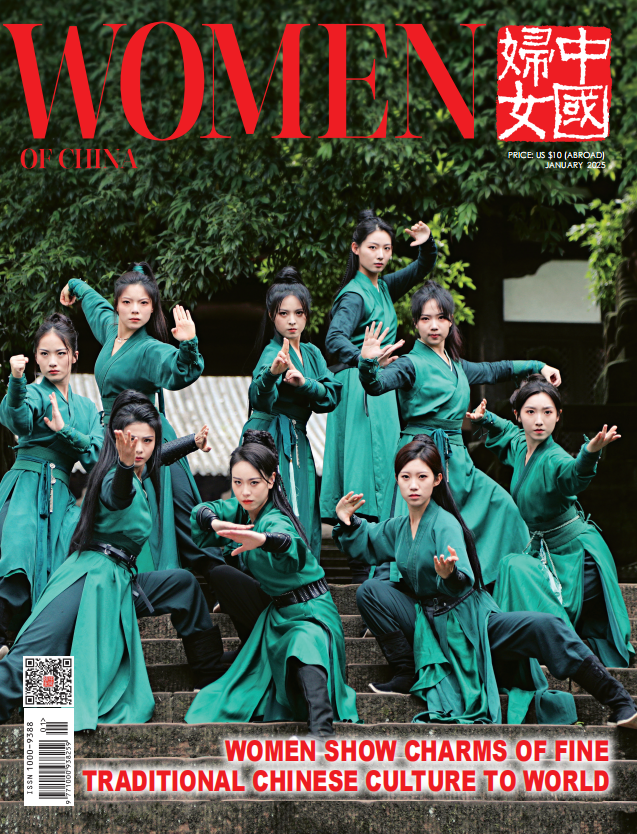



.jpg)

 WeChat
WeChat Weibo
Weibo 京公网安备 11010102004314号
京公网安备 11010102004314号